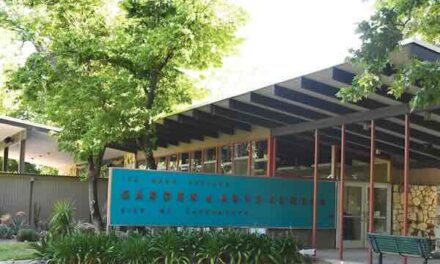Sacramento Police have begun a monumental overhaul in culture, recruitment, training and response to establish the department as a national leader for progressive law enforcement.
From the trust its officers derive among community members to its reaction to gun violence, protest marches, mental health emergencies and homelessness, the police department is using data-driven research and street experience to reshape its practices and reform the way it does business.

The process has been difficult, even painful. Months of protest marches exposed disconnects between police and residents who pay the department’s salaries and benefits. Officers have accused SPD leadership of weakness and lack of support. Community leaders have blamed police for excessive force. Business leaders have claimed officers don’t use enough force to protect property.
While residents expect SPD to professionally deliver around-the-clock safety and security, many community members believe the agency falls short. Likewise, many SPD officers admit they don’t trust the people for whom they risk their lives.
Two academic surveys completed last year showed 44 percent of Sacramento residents have “complete or quite a bit of trust” in SPD. Twenty-five percent of residents said they had “little or no trust” in the city’s police.
Among officers, survey results revealed a gulf in trust perceptions between cops and residents. Only 17 percent of SPD officers said they had “quite a bit of trust” in the residents where they patrol and work. None said they had “complete trust.”
The surveys underscored the difficulties faced by the city’s top law enforcement management team of Chief Daniel Hahn and City Manager Howard Chan. The surveys exposed cultural fault lines. And the research presented an opportunity to reposition the way Sacramento Police train, approach their duties and regard constituents.
“My biggest fear was that they would try to censor or take out questions they didn’t want to see,” says Cid Martinez, University of San Diego sociology professor who led the community and police surveys. “That did not happen.”
He adds, “I was really surprised at how supportive the police department was, because I did ask some tough questions. I wanted to know what community relations were like. They did not interfere with the kind of questions I was asking.”
As they reviewed the data, Hahn and Chan knew they could ignore or bury uncomfortable facts and continue business as usual. Or they could plow ahead and try to reset SPD’s culture and practices. They chose the second option. Today, the department is on path to make SPD far more responsive to community expectations and reflective of the people it serves.
“Daniel and I are completely aligned. We won’t ever be afraid to look at the things we need to change,” Chan says. “We need to put ourselves out there warts and all. We need to have the courage to stand up and say there are people on our force who are not good police. There are people who should be fired. There are also many officers who go out there and take all forms of abuse and do a phenomenal job.”
The makeover is comprehensive. Some police work—investigating violent crimes, taking statements—will never change. But many other calls—mental health emergencies, homelessness—are being reconsidered.
“Sac PD has been relatively progressive in the grand scheme of things,” Hahn says. “But we have some things to work on. We need to dig deeper and look at structural changes and biases. Some of these problems have been around forever. They won’t change overnight.”
He adds, “Look, we know this community can not survive without those officers. When all hell breaks loose, we need people in Sac PD uniforms who run toward danger.”
Not surprisingly, relationships between SPD and residents sink to their lowest levels in three historically underserved communities—Del Paso Heights, Oak Park and Meadowview. Hahn grew up in Oak Park and spent much of his career in Del Paso Heights. He has aggressively moved to involve local groups in recruiting and training to build trust.
The department introduced dozens of programs to increase diversity in the ranks. Teenagers participate in unique training sessions and criminal justice programs. Community members—former felons included—meet with police cadets and review SPD tactics.
Mervin Brookings runs a North Sacramento mentoring program called Brother 2 Brother. The group interacts with SPD academy cadets and has helped defuse potentially deadly encounters between police and residents.
“We regularly meet with the police and exchange information and work on issues that come up,” Brookings says. “When some young Black men thought they were being harassed by officers, we were able to immediately make a meeting between the community and the officers. I’m not talking about your average members of the community. I’m talking about gang members. This is working.”
Even when officers suspect a crime, they often alert Brother 2 Brother and ask for help. “They won’t just lock them up, they will call us to work with them,” Brookings says. “We’ve saved hundreds of lives, people who would have been incarcerated.”
Can SPD reforms succeed long-term? Inside examines that question next month.
R.E. Graswich can be reached at regraswich@icloud.com. To view the SPD community and police surveys, go to cityofsacramento.org/-/media/corporate/files/police/transparency/surveys/sacramento-community-survey-2019-final.pdf?la=en and cityofsacramento.org/-/media/corporate/files/police/transparency/surveys/spd-officer-survey-2019-final.pdf?la=en.














